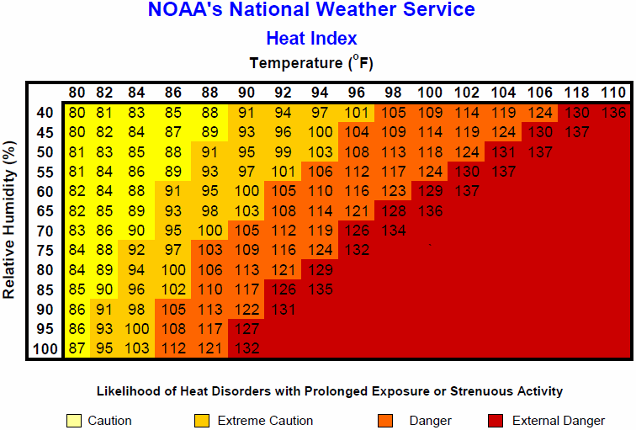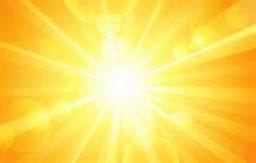First Long(ish) Ride in Quite a While
Sorry it’s been such a long time since my last post. I’ve just been busy with non-cycling related stuff, and have not had much to write about. I have ridden regularly, but have not had time for any extended rides. I’ve averaged 20-25 miles 3-5 time per week for the last 2 months or so.
I tell you this not to make excuses for not writing, but to lay the groundwork for a recent event. About a week ago I did a slightly longer ride than I’ve done in a while – about 33 miles. Toward the end of the ride I started to feel pretty darn slow. Granted, I’m not much of speed demon even at the best of times, but for the last few miles of this ride I felt like I just couldn’t get the pedals going.Upon finally reaching home, I stood up out of the trike and felt very dizzy. So dizzy I thought I might actually pass out. I had to sit down in the trike again for a while before I could even manage to pull into the garage and put my gear away. Then I needed to sit quietly at home, have a cold drink and relax for a good hour or more before I even felt up to showering and getting dressed.
What’s up with this? Sure I’m not riding 200 miles a week, but 33 miles isn’t much of a stretch for me. After some reflection and research, I realized I was probably suffering some moderate heat related illness.
Baby, it’s Hot Outside!
It’s mid-August here in Southwest Florida. That means it’s hot outside. Seriously hot. The average daily temperature in my neck of the woods in August is typically in the low 90’s, and this summer has pushed into the mid-upper 90’s often. And it’s humid also. Average morning humidity levels near my home hover around 90% this time of year. In other parts of the county is just as bad or even worse. The Pacific Northwest is having the hottest summer in many years. The central desert parts of the country get horribly hot every year.
Riding in that kind of hot weather puts a lot of extra stress on your body. If you don’t take some proper precautions, you actually risk exactly the symptoms I suffered last week, or even worse.
Your body has some natural defenses against higher temperatures. To help keep your body temperature down, your body will pump extra blood through your skin and extremities. But that leaves less blood for your muscles, which in turn increases your heart rate. Your body will also sweat to gain some evaporative cooling effect. But if the humidity also is high, your body faces even more stress because sweat doesn’t easily evaporate from your skin. That pushes your body temperature even higher.
This chart shows the relationship between heat, humidity, and the risk of developing heat related illness while exercising .

Heat-related illness
Your natural cooling defenses can fail if you’re exposed to high temperatures and humidity for too long, you sweat heavily, and you don’t drink enough fluids.
The result is some form of heat-related illness. According to the Mayo Clinic, heat-related illnesses occur along a spectrum, starting out mild but worsening if left untreated. Heat illnesses include:
- Heat cramps. Heat cramps are painful muscle contractions. Affected muscles may feel firm to the touch. Your body temperature may be normal.
- Heat syncope and exercise-associated collapse. Heat syncope is a feeling of lightheadedness or fainting caused by high temperatures, often occurring after standing for a long time, or standing quickly after sitting for a long time. Exercise-associated collapse is feeling lightheaded or fainting immediately after exercising, such as after a race.
- Heat exhaustion. With heat exhaustion, your body temperature rises as high as 104 F (40 C), and you may experience signs and symptoms including nausea, vomiting, headache, weakness, and cold, clammy skin. If left untreated, this can lead to heatstroke.
- Heatstroke. Heatstroke is a life-threatening emergency condition that occurs when your body temperature is greater than 104 F (40 C). Your skin may be hot, but your body may stop sweating to help cool itself. If your heatstroke occurs during exercise in hot, humid weather, you may continue to sweat for a short time after exercising. You may develop signs and symptoms including confusion, irritability, heart rhythm problems, dizziness, nausea, visual problems and fatigue. You need immediate medical attention to prevent brain damage, organ failure or even death.
How to beat the heat?
OK – so riding in the heat can be dangerous. You all probably knew that already. I’m not a complete novice at this riding stuff, and I certainly knew the dangers of heat stroke. But I still got caught up with some heat related symptoms. So I figured this was a good opportunity to remind everybody that if we intend to ride in the heat, there are a few things we can do to improve our bodies’ ability to keep our core temperature down
- Watch the temperature. Be aware of how hot it is, and how hot it’s going to get during your ride. If you know it’s going to be really hot, then pay extra attention to the early warning signs of heat illness and stop if you notice yourself getting overheated.
- Drink plenty of fluids. Dehydration is a key to heat illness. Help your body sweat and cool down by staying well-hydrated with water. Don’t wait until you’re thirsty to drink fluids. Consider a sports drink instead of water. Sports drinks can replace the sodium, chloride and potassium you lose through sweating. Avoid caffeinated and alcoholic drinks because they can actually promote fluid loss.
- Avoid midday sun. Ride in the morning or evening, when it is cooler outdoors.
- Find the shady routes. Try to choose routes that pass along tree-lined neighborhood streets with lots of shade, instead of more major streets where the shade is more elusive
- Wear sunscreen. A sunburn decreases your body’s ability to cool itself and increases the risk of skin cancer.
- Slow Down. When the temperature is in the 90’s and humidity is over 80%, it may not be the best time to grab a new Strava segment, or tackle that century ride you’ve thought of.
- Wear the right clothing. You want light-colored, loose-fitting clothing that help to wick away whatever sweat doesn’t evaporate from your skin. Avoid dark colors that absorb the heat and increase your body temperature even further.
- Take a break. Do you need to ride the entire route without stopping even once? Stop someplace shady, cool down and enjoy the moment with your buddies.
- If you start to feel sick, STOP IMMEDIATELY! Heat related illnesses are dangerous. Be aware of the warning signs and if you start to experience any symptoms, stop and get yourself cooled down as quickly as you can.

What Else?
In this part of the world ( and many others), riding in the heat is unavoidable unless we are willing to just stop riding in the summer. Most of us are clearly not willing to do that, bu we can protect ourselves from the heat as best we can.
I’m sure there are other things I could have done last week. What are your tips and tricks for beating the heat? Drop us a note here at The Recumbent Gourmet and let us know.

